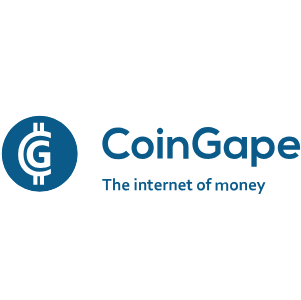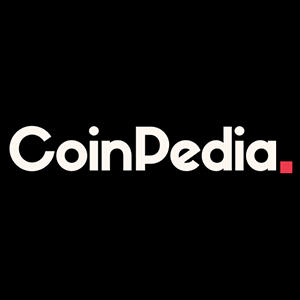In a dramatic turn of events in the decentralized finance (DeFi) space, Aave, a leading crypto lending platform, has decided to pull the plug on its lending services on Polygon Proof-of-Stake (PoS). This significant DeFi lending halt has sent ripples across the crypto community, primarily due to the substantial $300 million in Total Value Locked (TVL) that is now potentially at risk. Let’s dive into the details of this developing story and understand what it means for users and the broader DeFi ecosystem. Why Did Aave Decide to Halt DeFi Lending on Polygon PoS? The decision to halt DeFi lending on Polygon PoS wasn’t taken lightly. It stems from concerns raised by Aave’s community regarding a proposed plan by Polygon to allocate a staggering $1 billion in stablecoins for yield generation. Aave’s risk assessment framework flagged this plan as excessively risky, prompting a community vote on a crucial proposal. The core of the proposal was to set the Loan-to-Value (LTV) ratios for stablecoins on Polygon PoS to 0%. Effectively, this measure would prevent any new lending of stablecoins and gradually wind down existing positions as borrowers repay their debts. Here’s a breakdown of the key factors leading to this decision: Risk Concerns: Aave’s risk management framework identified potential vulnerabilities associated with Polygon’s proposed yield strategy. The details of these specific risks haven’t been fully elaborated publicly, but the community clearly sided with caution. Community Vote: Aave’s decentralized governance model put the decision in the hands of its token holders. The vote, as reported by The Block, saw overwhelming support for the proposal with over 692,000 votes in favor and 117,000 against. This strong consensus underscores the community’s apprehension about the perceived risks. Failed Polygon Plan: The backdrop to this decision is Polygon’s now-abandoned plan to deploy $1 billion in stablecoins for yield farming. While the exact reasons for the plan’s failure are not explicitly stated, Aave’s concerns highlight potential underlying issues or perceived risks associated with this strategy. Marc Boiron’s Plea: Polygon Labs CEO, Marc Boiron, publicly expressed his hope that Aave would reconsider the measure. This indicates the potential impact of Aave’s decision on Polygon’s DeFi ecosystem and the desire to maintain robust lending platforms on the network. However, the community vote and subsequent implementation suggest that Aave prioritized risk mitigation. What is the Potential TVL Risk? The most immediate consequence of this crypto lending risk mitigation strategy is the exposure of over $300 million in TVL on Aave’s Polygon PoS market. TVL, or Total Value Locked, represents the total value of assets deposited within a DeFi protocol. When lending is halted, and LTVs are set to 0%, users are incentivized to withdraw their deposits, leading to a decrease in TVL. Let’s break down the implications of this TVL risk : User Withdrawals: As stablecoin lending becomes unavailable, users who were utilizing Aave for lending and borrowing activities on Polygon PoS might choose to withdraw their assets and seek opportunities on other platforms or networks. Reduced Liquidity: A significant drop in TVL can lead to reduced liquidity within the Aave Polygon PoS market. This can impact the efficiency of trading and other DeFi activities on the platform. Ecosystem Impact: While Aave operates across multiple chains, this decision could have a broader impact on Polygon’s DeFi ecosystem. Reduced activity on a major platform like Aave might affect user sentiment and overall network activity. Opportunity Cost: For users who were relying on Aave for yield generation on Polygon PoS, the halt represents a loss of opportunity. They will need to explore alternative platforms and strategies to deploy their capital. Stablecoin Lending and Its Future on Polygon This situation raises questions about the future of stablecoin lending specifically, and DeFi in general, on Polygon. While Aave’s decision is specific to their platform and risk assessment, it highlights the inherent complexities and risks within the DeFi space. Consider these points regarding stablecoin lending on Polygon: Aspect Implication of Aave’s Halt User Choice Users have fewer options for stablecoin lending on Polygon PoS through Aave. Ecosystem Diversification May encourage diversification of DeFi platforms on Polygon, reducing reliance on a single platform for lending. Risk Awareness Highlights the importance of risk assessment and community governance in DeFi protocols. Future Strategies Polygon and other DeFi platforms may need to re-evaluate yield generation strategies to balance risk and reward. Navigating the DeFi Lending Landscape: Actionable Insights For users and participants in the DeFi ecosystem, this event offers several actionable insights: Stay Informed: Keep abreast of governance proposals and community decisions within DeFi protocols you use. Platforms like Aave prioritize community input for risk management. Diversify Platforms: Don’t rely solely on a single platform or chain for your DeFi activities. Diversification can mitigate risks associated with platform-specific decisions. Understand Risk Assessments: Pay attention to how DeFi platforms assess and manage risks. Aave’s proactive approach to risk management, even if it means halting services, can be seen as a positive sign of responsible governance. Explore Alternatives: If you were using Aave on Polygon PoS for lending, explore other DeFi platforms on Polygon or other chains that offer similar services. Research and compare different options based on your risk tolerance and yield expectations. Conclusion: A Calculated Risk Mitigation or a Setback for Polygon DeFi? Aave’s decision to halt lending on Polygon PoS is undoubtedly a significant development. While it presents a potential setback in terms of reduced TVL and user options on Polygon in the short term, it also underscores the importance of robust risk management and community-driven governance in DeFi. Whether this is a calculated risk mitigation strategy that will ultimately strengthen the DeFi ecosystem or a more profound challenge for Polygon’s DeFi growth remains to be seen. The situation serves as a crucial reminder of the dynamic and evolving nature of the crypto landscape and the need for continuous monitoring and adaptation. To learn more about the latest DeFi trends, explore our article on key developments shaping DeFi innovation.



















